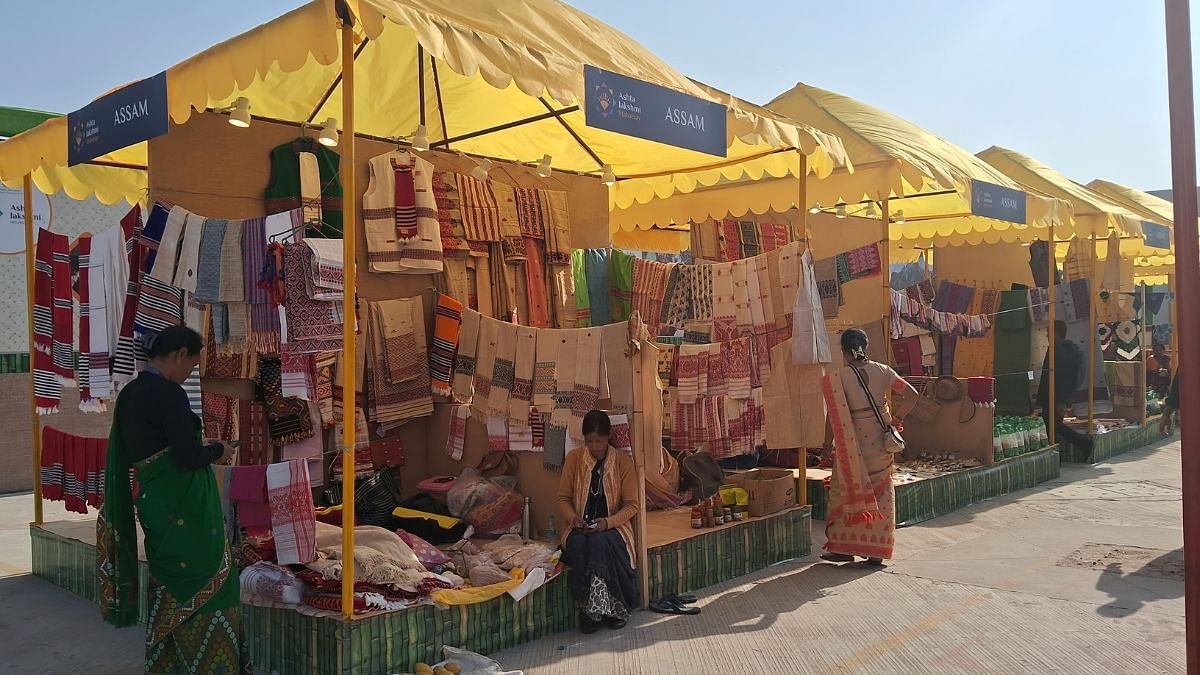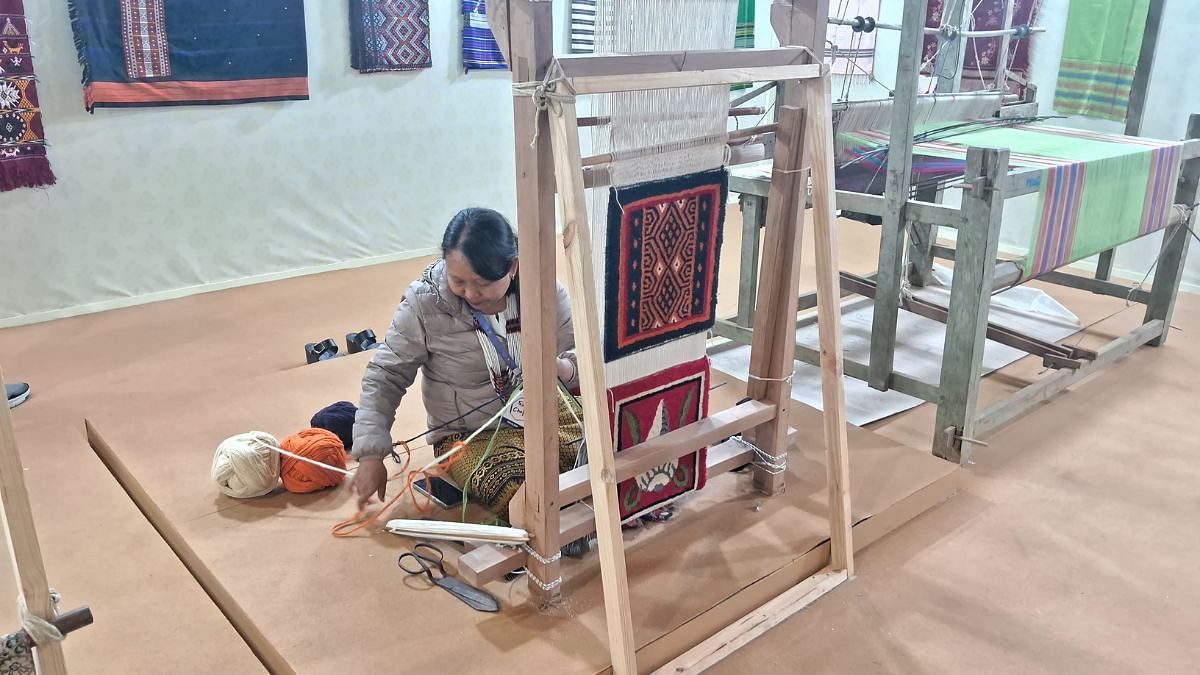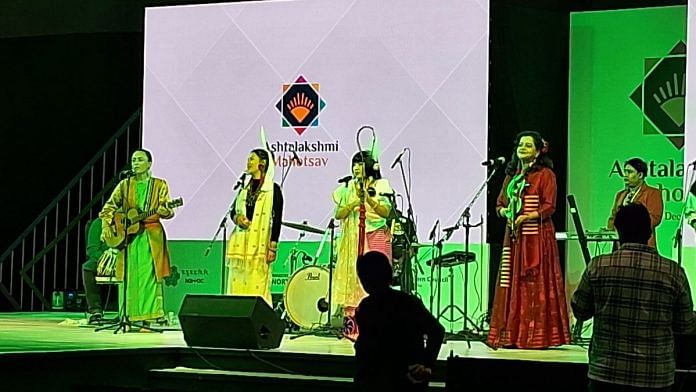New Delhi: Four women, singing folk songs in their distinct mother tongues, came together in perfect harmony on a Delhi stage. One played the traditional Manipuri Pena while another strummed her guitar with rhythmic bluesy notes. The audience enthusiastically cheered until the final note faded, and the words “Manipur needs peace” and “Pray for Manipur” reverberated through the auditorium.
The applause stopped and a heavy silence filled the hall, reminding attendees of the ongoing unrest in Manipur.
It was the occasion of the first Ashtalakshmi festival, recently organised by the Ministry of Development of the North Eastern Region at Delhi’s Pragati Maidan. A three-day event named after the eight forms of Lakshmi and led almost entirely by women, it exhibited the Northeast’s rich heritage – from dance and music to handlooms and zesty cuisines.

“Hereafter, we want to take it [Northeastern culture] to other parts of India, the metros and major cities….to attract people as tourists, as investment opportunities, as business partners…that is the aim of this exercise,” Brigadier RK Singh (Retd.), Managing Director of the North Eastern Handicraft and Handloom Development Corporation, told ThePrint.
Respect for nature
The festival came alive when Assamese vocalist and violinist Sunita Bhunyan blended traditional Northeastern music with the tunes of the Mississippi Delta blues. Accompanying her on stage was Tipriti Kharbangar, a Khasi folk and blues singer from Meghalaya; Mo Arenla, a Naga vocalist, and Mangka Manyanglambam, a folk musician from Manipur.
Bhuyan played the violin, Kharbangar the guitar, and Arenla the shaker. Mayanglambam, though, played the Pena, a 500-year-old single-stringed Manipuri instrument traditionally reserved for male musicians.
“Playing the instrument (Pena) should not be taboo because if it is kept sacred forever, it will vanish, and no one is going to get to love it,” she said.
Music for these young women is more than just creating art. It is a way of connecting with people, of preserving culture and nature. Tipriti Kharbangar, front person of the Shillong-based blues band Soulmate, describes music as a very “sacred and spiritual way” of delivering messages. “You don’t have to make a point, a statement – it’s like a prayer [recited] in a melodious way.”
Growing greed and indifference have led to the deterioration of nature, she said. “If my songs can touch some people, then Mother Nature is going to get band-aided little by little until she heals…this is why I do my folk music.”
The colourful haat (market) outside the auditorium showcased this cultural sensitivity toward nature. Bamboo slippers, wooden Wancho masks (from Arunachal), handmade beaded jewellery, and cloth bags were put up for sale, neatly packed in newspapers for buyers.

The Ashtalakshmi festival presented a unique opportunity for women business owners from the Northeast. It allowed Tashi Choju, a weaver from Arunachal Pradesh, and Abam, a jeweller from Nagaland, to step outside their states and showcase their homegrown businesses in the capital.
“Women of the Northeast are known not only because they get equal rights but also because of their active participation in the handloom and handicrafts industries, and many other industries like farming and biotechnology,” said Sunita Bhunyan.
Also read:
Ahimsa approach to fashion
The event concluded with a fashion show by designer Prasad Bidapa. Through his collection, Bidapa aimed to market traditional Northeastern fabrics such as Muga and Eri silk to a younger audience.
“These textiles should be in the luxury market because these are handmade. What could be a bigger luxury than something handmade?”
Most importantly, said Bidapa, no silkworms are harmed while making this “ahimsa silk”. Unlike conventional production, which involves boiling intact cocoons to obtain silk threads, Muga and Eri weavers wait for the moths to emerge first.
Amid these festivities and celebrations, however, some people were reminded of the violence that haunts Manipur today. Jarjum Ete, chairperson of the Arunachal Pradesh State Commission on Women, expressed her dilemma. “How can we celebrate [our culture] while killing each other? Our children are not safe. This is also where my concern as a woman from the region comes.”
(Edited by Zoya Bhatti)






